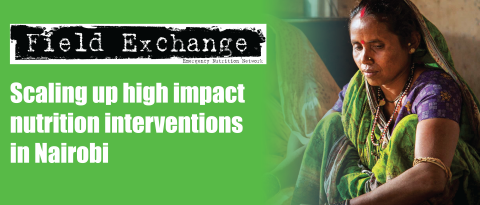Cash-based intervention and risk of acute malnutrition among children in internally displaced persons camps in Somalia
Research snapshot1
Cash-based interventions (CBI) have been used in Somalia since 2011, a country with one of the highest prevalences of acute child malnutrition in the world. A non-randomised cluster trial in internally displaced person (IDP) camps in peri-urban Mogadishu was undertaken to understand whether a CBI would reduce acute malnutrition and its risk factors. Ten IDP camps (clusters) were selected for the CBI, comprising a monthly unconditional cash transfer of US$84 for five months, one-off distribution of non-food item kits and provision of free piped water. Ten adjacent clusters were selected as controls. Primary outcomes were mean child dietary diversity score (CDDS) collected from children aged 6-59 months and their primary carers (155 intervention; 177 control) from randomly selected households (household cohort) and incidence of first episode of acute malnutrition, defined as mid-upper arm circumference (MUAC) < 12.5cm and/or oedema, collected from an exhaustive sample of children aged 6-59 months (759 intervention; 1,379 control) (child cohort).
In the household cohort, the CBI appeared to increase CDDS by 0.53 (95% CI 0.01; 1.05). In the child cohort, the acute malnutrition incidence rate (cases/100 child-months) was 0.77 (95% CI 0.70; 1.21) and 0.92 (95% CI 0.53; 1.14) in intervention and control arms respectively. The CBI did not appear to reduce the risk of acute malnutrition: unadjusted hazard ratio 0.83 (95% CI 0.48; 1.42) and hazard ratio adjusted for age and sex 0.94 (95% CI 0.51; 1.74). The CBI appeared to increase the monthly household expenditure by US$29.60 (95% CI 3.51; 55.68), increase household food consumption score (FCS) by 14.8 (95% CI 4.83; 24.8), and decrease the reduced coping strategies index (RCSI) by 11.6 (95% CI 17.5; 5.96).
The authors conclude that CBI appeared to improve beneficiaries’ wealth and food security but did not appear to reduce acute malnutrition risk in IDP camp children. Study limitations were that the trial was not randomised, the household cohort sample size was small, no other anthropometric measurements were taken due to insecurity in the field, and no food market data was available to aid interpretation of results.
Endnote
1Grijalva-Eternod CS, Jelle M, Haghparast-Bidgoli H, Colbourn T, Golden K, King S, et al. (2018) A cash-based intervention and the risk of acute malnutrition in children aged 6–59 months living in internally displaced persons camps in Mogadishu, Somalia: A non-randomised cluster trial. PLoS Med 15(10): e1002684. https://doi.org/10.1371/journal.pmed.1002684


